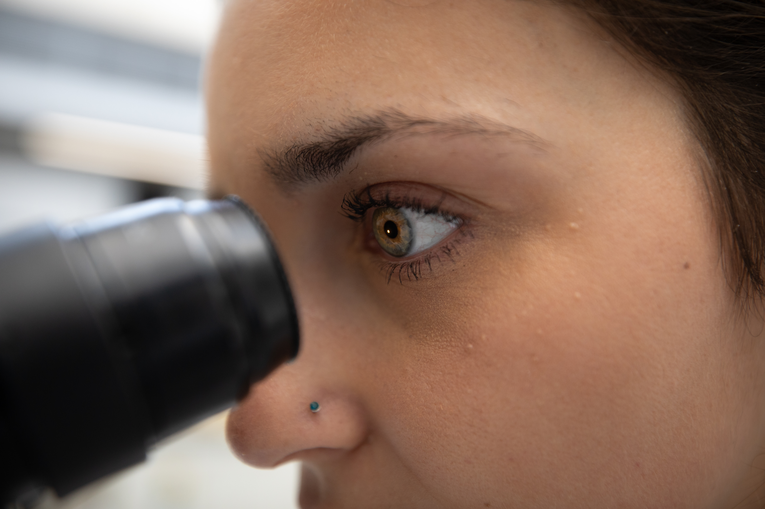
https://www.gosh.nhs.uk/news/mri-scans-more-precisely-define-and-detect-some-abnormalities-unborn-babies/
MRI scans more precisely define and detect some abnormalities in unborn babies
17 Mar 2021, 10:57 a.m.
MRI scanning can more precisely define and detect head, neck, thoracic, abdominal and spinal malformations in unborn babies, finds a large multidisciplinary study led by Evelina London Children’s Hospital, Great Ormond Street Hospital and UCL.
In the study, published today in Lancet Child and Adolescent Health, the team of researchers and clinicians demonstrate the ways that MRI scanning can show malformations in great detail, including their effect on surrounding structures. Importantly, they note that MRI is a very safe procedure for pregnant women and their babies.
They say the work, is invaluable both to clinicians caring for babies before they are born and for teams planning care of the baby after delivery.
Images courtesy of Alena Uus and Maria Deprez
Recent research has concentrated on correcting for fetal movement in fetal brain MRI and, more recently, for imaging the developing heart. However, there is an increasing demand to assess the entire fetus with MRI and research from the School of Biomedical Engineering & Imaging Sciences at Evelina London Children’s Hospital (BMEIS), have recently been able to develop a method to refine and correct the images captured, of the whole fetal body, even if there is movement during the scan.
Professor Paolo De Coppi, Consultant Paediatric Surgeon at GOSH and collaborator in the research said:
“For most expectant parents, an ultrasound is all that is needed to check on the health of their baby, but MRI is a safe option to give us more detail when we need to further investigate the growing fetus. For example, fetal MRI is an invaluable tool to assess spina bifida before birth - imaging of the fetal brain along with the spinal cord is an important factor in evaluating who could benefit from fetal surgery – so any advances in the technology are a welcome step forward.”
MRI can give more precise information than ultrasound alone
Lead researcher, Professor Mary Rutherford said ultrasound remains the gold standard for fetal screening and indeed is complementary to these optimized MRI approaches for evaluating abnormalities of the fetal body.
“Until now, ultrasound has been the modality of choice to diagnose those anomalies. However, sometimes the ability of ultrasound to define the most detailed anatomy is limited. MRI scanning offers the potential to more precisely define malformations that could help support clinicians in their planning of care and counselling of parents,”.
MRI is commonly used in the classification of fetal brain anomalies, although its use in fetal body anomalies is less widely adopted, advances have led to the validation of its role in the antenatal investigation of several conditions including the investigation of fetuses with spina bifida: imaging of the fetal brain along with the spinal cord is an important factor in evaluating which patients could benefit from fetal surgery.
For fetal neck masses, MRI provides a clear advantage over conventional ultrasound for assessing tumour extension and giving a 3D visualisation of the tumour’s relation to the airway.
MRI may also be better than ultrasound for distinguishing between normal and abnormal lung tissue, and in making other diagnoses such as diaphragmatic hernia—particularly in late gestation, when doing so with ultrasound is challenging.
New approaches to imaging the fetal body with MRI allows both motion correction of the fetal images and volume reconstructions of body organs and defects. Researchers say this improves visualisation and therefore detection and characterisation of abnormalities.
The project brought together surgeons, fetal medicine specialists, radiologists and physicists to review the use of magnetic resonance imaging to investigate conditions in the unborn baby; this approach has already been integrated into clinical practice at Guy's and St Thomas' Trust.
Ongoing work is focused on a fully automated process suitable for clinical translation and wider dissemination into clinical practice.
Fetal body MRI and its application to fetal and neonatal treatment: an illustrative review, Davidson et al, The Lancet Child & Adolescent Health, Available online 12 March 2021
Images courtesy of Alena Uus and Maria Deprez.
All research at GOSH is unperpinned by the NIHR GOSH BRC

‘Ready-made’ T-cell gene therapy tackles ‘incurable’ T-Cell leukaemia
A groundbreaking new treatment using gene-edited immune cells, developed at GOSH and UCL has shown promising results in helping children and adults fight a rare and aggressive cancer

GOSH manufactures new gene therapy for rare condition
A specialist laboratory team based at Great Ormond Street Hospital have manufactured a new gene therapy to treat a baby with the rare genetic condition, Hunter Syndrome.

Celebrating the Impact of the Professor Maria Bitner-Glindzicz Memory Fund
The third annual report of the Maria Bitner-Glindzicz Memory Fund has just been compiled - The fund continues to support ground-breaking research and early career development.

